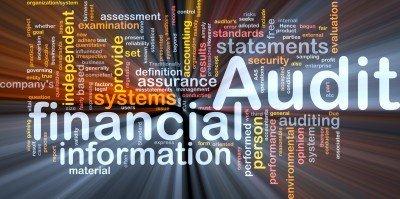Traditionally, there has been no guidance in US GAAP about management’s responsibility to evaluate whether there is substantial doubt about an entity’s ability to continue as a going concern or to provide related footnote disclosures. It has been a matter considered by the auditors, and auditors would include an explanatory paragraph in the audit opinion if the auditor concluded that substantial doubt existed about an entity’s ability to continue as a going concern. This changed in August 2014 when FASB issued an Accounting Standards Update captioned “Presentation of Financial Statements—Going Concern (Subtopic 205-40).” ASC 205-40 is effective for annual periods ending after December 15, 2016, and for annual periods and interim periods thereafter.
Now, an entity’s management should evaluate whether there are conditions or events, considered in the aggregate, that raise substantial doubt about the entity’s ability to continue as a going concern within one year after the date that the financial statements are issued. Substantial doubt about an entity’s ability to continue as a going concern exists when relevant conditions and events, considered in the aggregate, indicate that it is probable that the entity will be unable to meet its obligations as they become due within one year after the date that the financial statements are issued.
When management identifies conditions or events that raise substantial doubt about an entity’s ability to continue as a going concern, management should consider whether its plans that are intended to mitigate those relevant conditions or events will alleviate the substantial doubt. The mitigating effect of management’s plans should be considered only to the extent that (1) it is probable that the plans will be effectively implemented and, if so, (2) it is probable that the plans will mitigate the conditions or events that raise substantial doubt about the entity’s ability to continue as a going concern.
If conditions or events raise substantial doubt about an entity’s ability to continue as a going concern then disclosures are required. The disclosure requirements vary depending on whether the substantial doubt is or is not alleviated as a result of consideration of management’s plans.
Sears Holdings Corporation’s disclosures in its Form 10-K under the new standard appear to have attracted the most attention in the press so far. Press reports indicated “Sears warned investors that it has “substantial doubt” it will stay in business.” But is that the whole story?
Footnote 1 to the financial statements, under a section captioned “Uses and Sources of Liquidity”, discusses a series of actions taken to mitigate liquidity concerns, including new financing arrangements, restructuring programs intended to generate costs savings, and the sale of the Craftsman brand to Stanley Black & Decker.
The footnote continues noting that “Our historical operating results indicate substantial doubt exists related to the Company’s ability to continue as a going concern. We believe that the actions discussed above are probable of occurring and mitigating the substantial doubt raised by our historical operating results and satisfying our estimated liquidity needs 12 months from the issuance of the financial statements. However, we cannot predict, with certainty, the outcome of our actions to generate liquidity, including the availability of additional debt financing, or whether such actions would generate the expected liquidity as currently planned.”
The footnote also notes that “In August 2014, the FASB issued an accounting standards update which requires management to assess whether there are conditions or events, considered in the aggregate, that raise substantial doubt about the entity’s ability to continue as a going concern within one year after the financial statements are issued. If substantial doubt exists, additional disclosures are required. This update was effective for the Company’s annual period ended January 28, 2017. The Company’s assessment of our ability to continue as a going concern is further discussed in the “Uses and Sources of Liquidity” paragraph above. The adoption of the new standard did not have a material impact on the Company’s consolidated financial position, results of operations, cash flows or disclosures.”
So while it is true that management believes substantial doubt exists as to Sears’ ability to continue as a going concern, the press did not report or emphasize that management believed it has taken action probable of occurring and mitigating the substantial doubt raised. In addition, the audit report did not include an explanatory paragraph that the auditor concluded that substantial doubt existed about Sears’ ability to continue as a going concern.
Other examples of application of ASC 205-40 include ImmunoGen, Inc. (mitigating actions are not considered probable), Omeros Corporation (mitigating actions are not considered probable) and Hooper Holmes, Inc. (mitigating actions are not considered probable).
